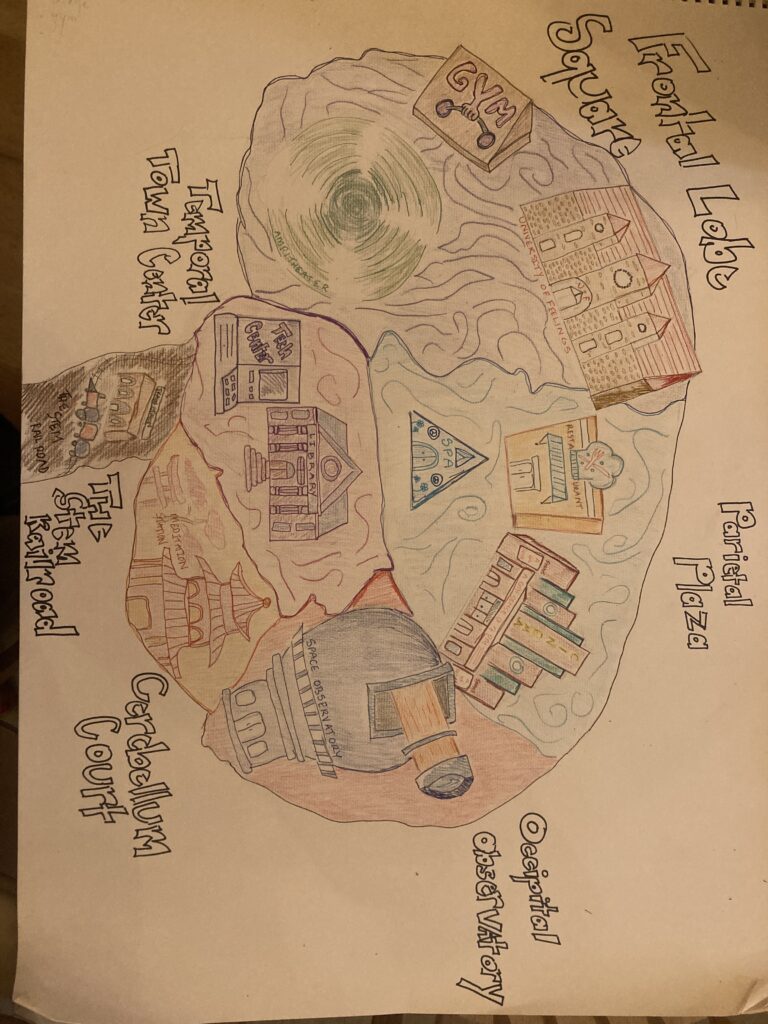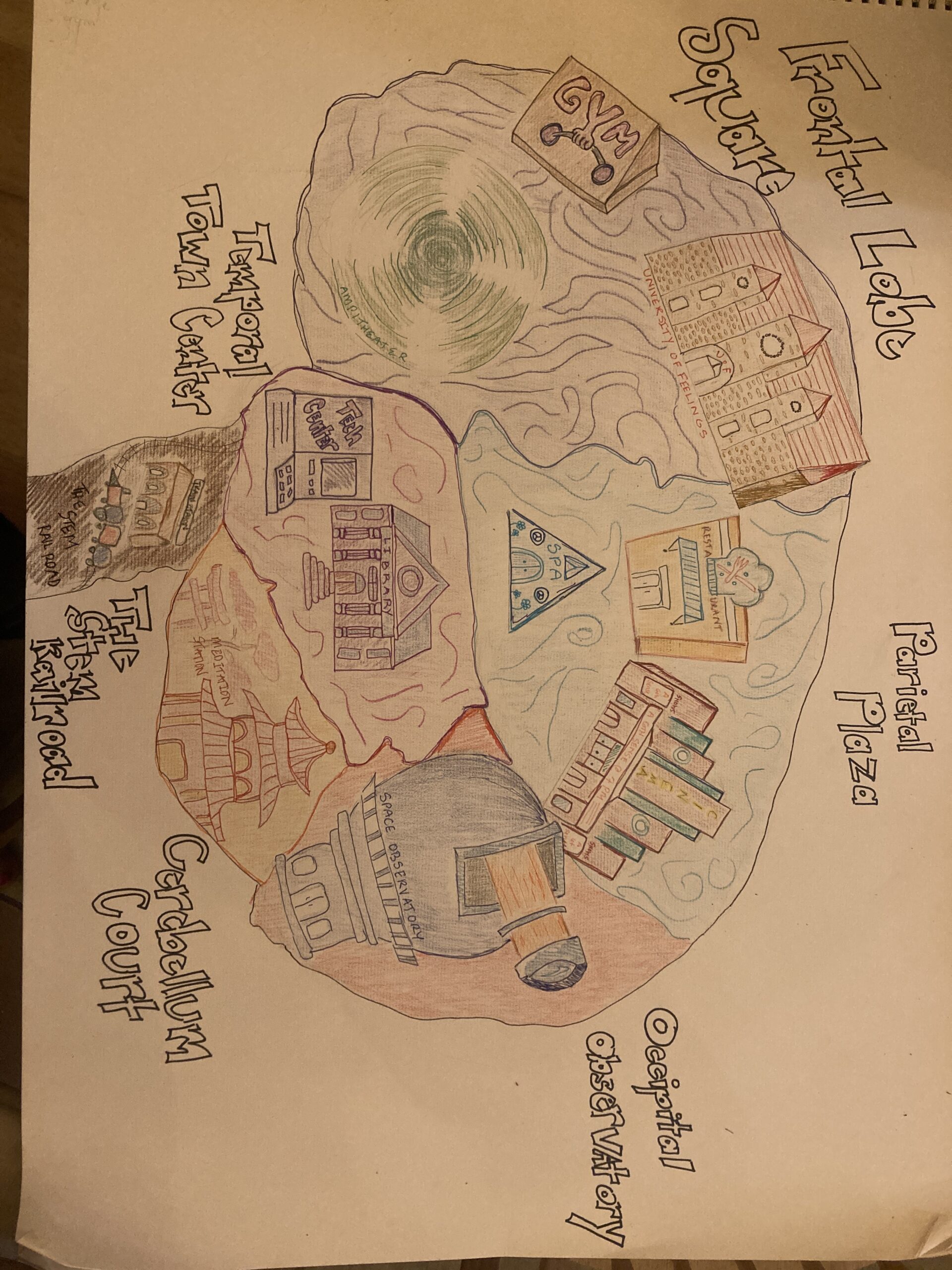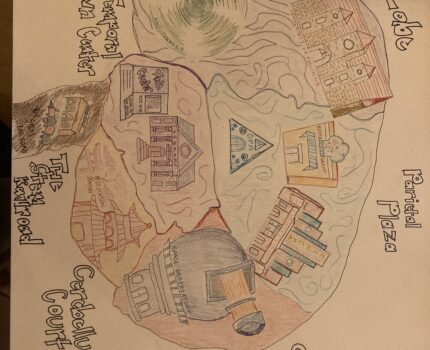The brain is the center of all human action, from controlling simple activities like sleep, eating, and moving; to more complex processes such as memory, emotion, and thought. At the head of the central nervous system, the brain is a hub. Neurological signals come and go from the peripheral nervous system, and are processed in different regions of the brain. In many ways, I find that the brain is similar to a city, a regional hub that receives news from the outside, and is the center of the action. In every city, there are distinct neighborhoods that have different cultures and structures that come together to make a city whole. My STEAM project is an illustrative map of The City of the Brain, with different cortices and lobes represented by different neighborhoods. This project covers the objective of identifying gross and microscopic anatomical components of the nervous system, specifically the brain.
This project is an illustration of a bird’s eye view of the brain if it were a city. The general shape of the brain remains accurate, with a few artistic shifts to account for city geography and topography. For example, I represent the occipital lobe as a space observatory, as this region of the brain is responsible for visual perception (Queensland). Another example is the temporal lobe, which is associated with encoding memory. This section of the city will include a library and other public records buildings such as a “Tech Center”. The Cerebellum is represented by a temple and meditation, because its function in the body is linked to balance and posture (Kenhub). The brainstem is represented by a train and train station, because it is the link of electrical signals between the peripheral nervous system and the brain. The frontal lobes are key to expressive language and for higher level executive functions. The parietal lobes are linked to sensory perception and the processing of the senses of taste, hearing, sight, touch, and smell (Physiopedia).
Kenhub. (n.d.). Cerebellar cortex. Kenhub. Retrieved November 26, 2022, from https://www.kenhub.com/en/study/structure-of-cerebellum
Physiopedia. (n.d.). Parietal lobe. Physiopedia. Retrieved November 26, 2022, from https://www.physio-pedia.com/Parietal_Lobe#:~:text=medial%20parietal%20lobe-,Function,other%20areas%20of%20the%20body.
The State of Queensland; Queensland Health. (2013, September 12). Brain map: Occipital lobes. Queensland Government. Retrieved November 22, 2022, from https://www.health.qld.gov.au/abios/asp/boccipital#:~:text=The%20occipital%20lobes%20sit%20at,including%20colour%2C%20form%20and%20motion.



Dexter Lowe’s STEAM Project is about the functions of the brain, and covers the project unit objective of identifying gross and microscopic anatomical components of the nervous system. He compares the brain to a city, and each different part of the brain is a different neighborhoods in this said city. His abstract project includes a detailed map that breaks down each part of the brain while also having illustrations for each neighborhood. Each illustration on the map is made in correlation of the function of that “neighborhood” or in other words that part of the brain. For example, the brain stem has been drawn as a train station. This is because the brain stem acts as a link of electrical signals between the peripheral nervous system and the brain. Another example would be how Lowe chose to draw a temple where the cerebellum is located. He said he made this decision because the cerebellum’s primary function is to provide balance and posture.
I think that Lowe has done a very good job illustrating and explaining his steam project. I found the brain city map to be a very smart approach when trying to describe the functions of each part of the brain. His drawings were very clear and easy to understand, and his essay portion did a good job describing his overall abstract part of the project.